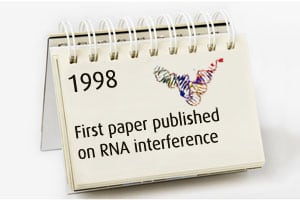 Despite a century of advancement, most modern medicines work in one of a select few ways.
Despite a century of advancement, most modern medicines work in one of a select few ways.
These include replacing substances that are lacking in the body, such as insulin for people with diabetes or iron supplements for people with anaemia.
Alternatively, some medicines are used to destroy infectious microorganisms or abnormal cells. These include antibiotics to get rid of harmful bacteria, or anti-cancer therapies that target cancer cells.
Other medicines, such as anticoagulants, work by altering the activity of a person’s cells, blocking natural reactions in the body that can be harmful or boosting an action if it’s beneficial.
But what if a treatment could go further than just altering a person’s cells, but actually change the very make-up of a person to help treat a serious disease?
Although seemingly still far from producing a therapy that can be used in a mainstream healthcare setting, the potential for inhibiting the expression of an individual’s genes through RNA interference (RNAi) is still an exciting one for many.
Ribonucleic acid, or RNA, is one of two nucleic acids, along with DNA, and has a vital role in the coding, decoding, regulation and expression of genes in each living creature.
Part of its action involves the use of messenger RNA (mRNA)that carry genetic information from DNA to the part of the cell where proteins are made, with each molecule of mRNA encoding the information for one protein.
Commonly referred to as ‘gene silencing’, the purpose of RNAi is to stop these mRNAs from reaching their target, ensuring no protein is made. As succinctly described by the US National Institutes for Health (NIH), RNAi is a ‘natural process that cells use to turn down, or silence, the activity of specific genes’.
It’s a process that we likely wouldn’t know about without the work of researchers Professor Andrew Fire and Professor Craig Mello, who were awarded the Nobel Prize in 2006, who were awarded in 2006 for the discovery of RNAi.
The results of their ground-breaking research were published in the journal Nature on February 19, 1998, under the title Potent and Specific Genetic Interference by Double-stranded RNA in Caenorhabditis elegans.
The paper demonstrated that when double-stranded RNAs – a combination of a ‘sense’ RNA and an ‘antisense’ RNA – were injected into animals, they degraded mRNA molecules carrying a genetic code identical to that of the double-stranded RNA, silencing the gene.
Through their experiments, Prof Fire, Prof Mello and their team were able to manipulate twitching movements in worms – a minor effect perhaps, but one that “heralded the start of a new research field” according to the Nobel Assembly.
Like many advances in science, thoughts turned to how this knowledge could be used to help create treatments, with the Nobel Assembly noting at the time of Fire and Mello’s prize that a gene causing high blood cholesterol levels had been shown to be silenced by treating animals with silencing RNA.
Creating a tangible therapy that can be used in humans has proved a difficult task in the 15 years since the discover y of RNAi, however, with the likes of Roche announcing in 2010 it was cutting its programme to develop RNAi-based treatments, while other companies have experienced key experimental failures.
Part of the problem is down to the actual construction of an RNA molecule that can be delivered into the body, which is too unstable to enter cells effectively at high enough rates to make a difference.
As reported in the PME article RNA Interference Rebirth (June 2011), these challenges are being overcome and some companies are starting to see research efforts pay-off.
Leaders in the field include Alnylam which, despite suffering a knock back when Novartis decided not to go ahead with a $100m option to license its RNAi trigger IP and undergoing major job cuts, is confident it will have five RNAi therapeutic programmes in late-stage clinical development by the end of 2015.
The most advanced of these is ALN-TTR02 – an investigational RNAi treatment in patients with familial amyloidotic polyneuropathy, which is expected to enter phase III trials in late 2013, while other therapies in development by Alnylam include treatments for hypercholesterolaemia, haemophilia and acute intermittent porphyria.
Alnylam is also involved in collaborations with companies including Genzyme, the Medicines Company and Takeda, while other biotechs, such as Dicerna, RXi and Tekmira, all have their own programmes, demonstrating a wider belief in the potential of RNAi in human medicine.
Some involved in the industry have likened the development of RNAi-based therapies to that of antibodies, which took more than a decade to overcome early challenges in development and become a viable treatment option, and making large sums for those companies who invested early.
A similar story could await firms focused on RNAi, but as it stands, we can admire the science that can alter how a body handles its genetic information, and hope for its medicinal benefits.





